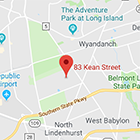West Babylon Location
Holbrook Location
Hours of Operation
- Monday - Friday
- 7:00 AM to 5:00 PM
- Saturday
- 7:00 AM to 12:00 PM
- Sunday
- Closed
Services
Start Recycling Today!
631-319-1910
Babylon
Holbrook
Hours
- Monday - Friday
- 7:00 AM to 5:00 PM
- Saturday
- 7:00 AM to 12:00 PM
- Sunday
- Closed


